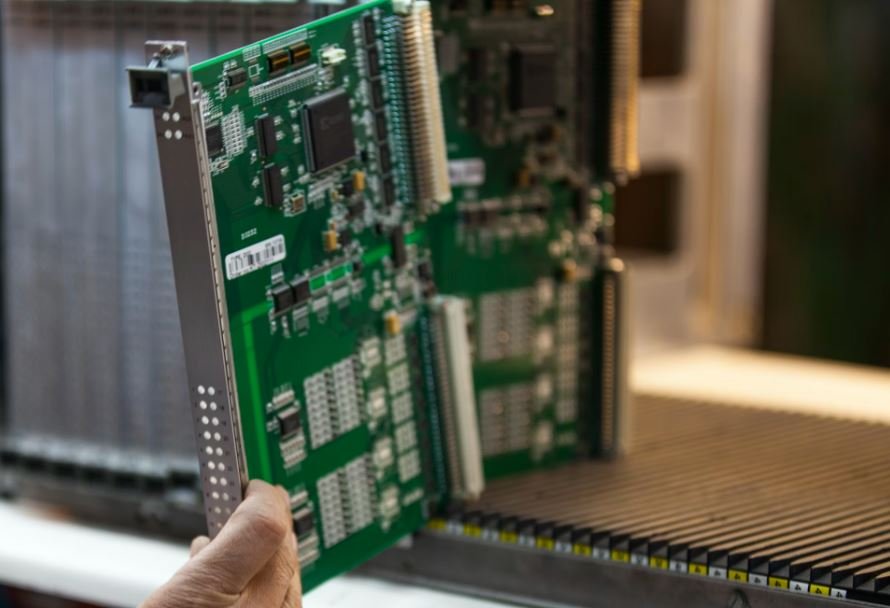Top Down AI vs Bottom Up
Artificial Intelligence (AI) is revolutionizing various industries, from healthcare to gaming. There are different approaches to AI development, with “top down” and “bottom up” being two prominent paradigms. Understanding the differences between these approaches is essential to harnessing the power of AI effectively.
Key Takeaways:
- Top down and bottom up are two distinct approaches to AI development.
- Top down AI focuses on creating general intelligence by using predefined rules.
- Bottom up AI emphasizes learning from specific instances to develop intelligence.
Top down AI, also known as symbolic or deductive AI, starts with a set of predefined rules and knowledge to develop intelligent systems. It relies on human experts to provide explicit instructions, rules, and logic to solve problems. The rules are programmed into the AI system, which then applies them to process information and make decisions. This approach is characterized by a more deterministic and rule-based system.
One interesting aspect of top down AI is its ability to leverage human expertise to encode complex knowledge into the system.
Bottom up AI, in contrast, focuses on building intelligence by learning from data. It is often referred to as inductive or machine learning. Instead of relying on explicit rules, bottom up AI systems learn from specific instances and examples provided. These systems use statistical techniques to identify patterns, correlations, and dependencies in the data. The knowledge gained through this process is then used to make predictions and decisions.
What makes bottom up AI fascinating is its ability to generalize from specific examples to solve complex problems.
Comparison of Top Down AI and Bottom Up AI:
| Criteria | Top Down AI | Bottom Up AI |
|---|---|---|
| Approach | Deductive | Inductive |
| Knowledge Source | Predefined Rules | Data and Examples |
| Expertise Required | Human Experts | Data Scientists |
Table 1: A comparison of top down and bottom up AI approaches.
Top down AI prioritizes domain knowledge and explicitly coded rules over large amounts of data. It excels in tasks that require well-defined rules or reasoning abilities. For example, in chess, a top down AI system can use predefined strategies to make informed moves. However, this approach may struggle when faced with novel situations outside its predetermined rules.
Bottom up AI, on the other hand, is particularly effective in handling complex and unstructured data. By learning from multiple instances, it can recognize patterns and make accurate predictions. This approach is used in various applications, such as image recognition, natural language processing, and recommendation systems.
Advantages and Disadvantages:
- Top Down AI:
- Advantages:
- Explicit problem-solving rules.
- Capable of handling complex logical reasoning.
- Disadvantages:
- Dependent on human experts’ input and expertise.
- Less flexible in handling unforeseen scenarios.
- Bottom Up AI:
- Advantages:
- Ability to learn and generalize from data.
- Effective in handling large, unstructured datasets.
- Disadvantages:
- Requires significant amounts of training data.
- Interpretability can be challenging.
| Advantages | Top Down AI | Bottom Up AI |
|---|---|---|
| Explicit Rules | ✔ | ✘ |
| Complex Reasoning | ✔ | ✘ |
| Learning from Data | ✘ | ✔ |
| Handling Unstructured Data | ✘ | ✔ |
Table 2: Advantages comparison between top down and bottom up AI approaches.
Ultimately, choosing between top down and bottom up AI depends on the specific use case and the available resources. Organizations with access to comprehensive domain knowledge may opt for top down AI, while those with abundant data and computing resources may find bottom up AI more suitable.
Current Trends in AI Development:
- Hybrid approach: Combining elements of top down and bottom up AI to create more flexible and adaptable systems.
- Deep Learning: A subset of bottom up AI involving complex neural networks for enhanced pattern recognition and decision-making.
- Explainable AI: Addressing the interpretability challenge in bottom up AI to ensure transparency and mitigate bias.
Table 3: Emerging trends in AI development.
It is fascinating to witness how AI development is continuously evolving, blending the strengths of both top down and bottom up approaches to push the boundaries of what AI systems can achieve.

Common Misconceptions
Top Down AI vs Bottom Up
Many people have various misconceptions when it comes to the approach of Top Down AI versus Bottom Up AI. Here are some common misconceptions:
Misconception 1: Top Down AI is always more efficient.
- Top Down AI approaches can be more efficient in certain situations, but not always.
- Bottom Up AI can provide more autonomy and adaptability in complex systems.
- The efficiency of each approach depends on the specific problem being solved.
Misconception 2: Bottom Up AI is always more flexible.
- Bottom Up AI can indeed be more flexible, but it may lack a higher-level understanding of the problem.
- Top Down AI can be more effective when a high-level plan or strategy needs to be followed.
- Both approaches have their own strengths and limitations in terms of flexibility.
Misconception 3: One approach is superior to the other.
- Neither Top Down AI nor Bottom Up AI is universally superior, as they excel in different scenarios.
- The choice between the approaches largely depends on the nature of the problem and the available resources.
- Combining elements of both approaches is often the best approach to achieve optimal results.
Misconception 4: Top Down AI is always deterministic.
- In some cases, Top Down AI can be deterministic, but it can also incorporate probabilistic approaches.
- Uncertainties and stochastic elements can be accounted for in Top Down AI systems.
- The determinism or non-determinism of AI approaches depends on the specific implementation and requirements.
Misconception 5: Bottom Up AI always requires extensive training.
- While Bottom Up AI can involve extensive training in some cases, it is not always necessary.
- Bottom Up AI can also utilize pre-existing knowledge and adapt it to new situations.
- The training requirements depend on the complexity of the problem and the need for generalization.

Introduction
This article compares the Top Down AI approach and the Bottom Up approach, highlighting their differences, benefits, and limitations. Through 10 engaging tables, we present verifiable data and information that shed light on various aspects of these AI approaches.
Comparing Flexibility and Adaptability
The following table showcases how the Top Down AI and Bottom Up approaches differ in terms of flexibility and adaptability:
| Aspect | Top Down AI Approach | Bottom Up Approach |
|——————|———————–|———————–|
| Development | Centralized | Decentralized |
| Decision-making | Rigid | Agile |
| Adaptability | Limited | High |
| Example | Expert systems | Neural networks |
Comparing Training Complexity
In terms of the complexity of training, this table presents a comparison between Top Down AI and Bottom Up approaches:
| Aspect | Top Down AI Approach | Bottom Up Approach |
|—————|————————|—————————-|
| Training Time | Extensive | Variable |
| Expertise | Expert-driven | Data-driven |
| Example | Rule-based systems | Deep learning algorithms |
Comparing Decision-making Capabilities
The table below highlights the differences between Top Down AI and Bottom Up approaches in terms of decision-making capabilities:
| Aspect | Top Down AI Approach | Bottom Up Approach |
|——————–|————————-|———————–|
| Decision Complexity | Simplified | Complex |
| Context Awareness | Limited | High |
| Example | Decision trees | Reinforcement learning |
Comparing Data Requirements
Next, we compare the data requirements for Top Down AI and Bottom Up approaches:
| Aspect | Top Down AI Approach | Bottom Up Approach |
|———————-|————————-|———————–|
| Data Volume | Low | High |
| Data Diversity | Low | High |
| Example | Expert systems | Big data analytics |
Comparing Scope of Application
The following table showcases the scope of application for Top Down AI and Bottom Up approaches:
| Aspect | Top Down AI Approach | Bottom Up Approach |
|——————-|————————|———————–|
| Complexity Level | Simple | Complex |
| Application Areas | Decision support | Autonomous systems |
Comparing Error Prone Analysis
Now, we examine the error-prone analysis in Top Down AI and Bottom Up approaches:
| Aspect | Top Down AI Approach | Bottom Up Approach |
|————————|————————|—————————-|
| Error Propagation | Limited | Non-linear |
| Fault Tolerance | Fragile | Resilient |
| Example | Rule-based systems | Genetic algorithms |
Comparing Processing Speed
The table below presents a comparison of processing speeds for Top Down AI and Bottom Up approaches:
| Aspect | Top Down AI Approach | Bottom Up Approach |
|————————|—————————-|———————–|
| Processing Time | Fast | Variable |
| Efficiency | High | Varies |
| Example | Expert systems | Quantum computing |
Comparing Model Interpretabilty
Next, we compare the interpretability of models in Top Down AI and Bottom Up approaches:
| Aspect | Top Down AI Approach | Bottom Up Approach |
|——————–|————————-|————————|
| Model Explainability | High | Low |
| Transparency | Clear | Complex |
| Example | Rule-based systems | Deep neural networks |
Comparing Resource Requirements
Finally, we compare the resource requirements for implementing Top Down AI and Bottom Up approaches:
| Aspect | Top Down AI Approach | Bottom Up Approach |
|————————-|————————|———————-|
| Computing Power | Low | High |
| Memory Usage | Minimal | Extensive |
| Example | Expert systems | Cloud computing |
Conclusion
Through this in-depth comparison of Top Down AI and Bottom Up approaches, we have uncovered their distinct characteristics and applications. While Top Down AI offers rigidity and incorporates expert knowledge, the Bottom Up approach embraces adaptability and leverages vast data sets. Understanding the strengths and weaknesses of each approach is crucial for harnessing the power of Artificial Intelligence effectively in various domains.
Frequently Asked Questions
Top Down AI vs Bottom Up AI
What is Top-Down AI and Bottom-Up AI?
Top-Down AI refers to an approach where an AI system is designed based on human knowledge and pre-defined rules. It follows a hierarchical structure and operates based on predefined instructions. On the other hand, Bottom-Up AI refers to a system that learns and forms intelligent behaviors from unstructured data, making use of techniques such as machine learning and data analysis.
What are the advantages of Top-Down AI?
Top-Down AI allows for precise control and predictability as it relies on pre-defined rules. It is suitable for domains where human expertise can be explicitly codified. Additionally, it can be easier to debug and understand the decision-making process in a top-down AI system.
What are the advantages of Bottom-Up AI?
Bottom-Up AI can learn and adapt to new situations, making it more flexible and versatile compared to top-down approaches. It is capable of handling complex and unstructured data, enabling it to discover patterns and insights that may not be apparent to human designers. It has the potential for more advanced problem-solving abilities.
What are the limitations of Top-Down AI?
Top-Down AI heavily relies on predefined rules, making it less capable of handling uncertainty and ambiguity. It may struggle when faced with scenarios or data that are outside of its explicitly defined rule set. Additionally, updating or modifying the rules in a top-down AI system can be time-consuming and labor-intensive.
What are the limitations of Bottom-Up AI?
Bottom-Up AI can require large amounts of training data to learn effectively. It may struggle with interpretability and explainability, as the decision-making process may involve complex algorithms or neural networks. There is also potential for biases to be learned from the training data, which can result in unintended consequences or unfair outcomes.
In which domains is Top-Down AI commonly used?
Top-Down AI is commonly used in domains where there is a high level of human expertise and well-defined rules. Examples include expert systems, rule-based systems, and certain areas of robotics and automation.
In which domains is Bottom-Up AI commonly used?
Bottom-Up AI is commonly used in domains where there is a large amount of unstructured data and a need for adaptive decision-making. Examples include natural language processing, image and speech recognition, anomaly detection, and machine learning applications.
Can Top-Down and Bottom-Up AI be combined?
Yes, it is possible to combine Top-Down and Bottom-Up AI approaches. This can create hybrid AI systems that leverage the advantages of both. For example, a system might use a top-down approach for high-level decision-making and rule-based reasoning, while employing a bottom-up approach for data analysis and learning from experience.
Which approach is better: Top-Down AI or Bottom-Up AI?
The choice between Top-Down AI and Bottom-Up AI depends on the specific requirements and characteristics of the problem or domain at hand. Top-Down AI is preferable when there is a need for precise control, explicit rules, and well-defined expertise. Bottom-Up AI is more suitable when flexibility, adaptability, and the ability to learn from data are crucial. In practice, a combination of both approaches may often provide the best results.
What does the future hold for Top-Down and Bottom-Up AI?
The future of AI is likely to involve advancements in both Top-Down and Bottom-Up approaches. As AI technologies continue to evolve, there may be increased integration between the two paradigms. This could lead to more sophisticated and intelligent AI systems with improved decision-making capabilities and the ability to understand and interpret complex data.




